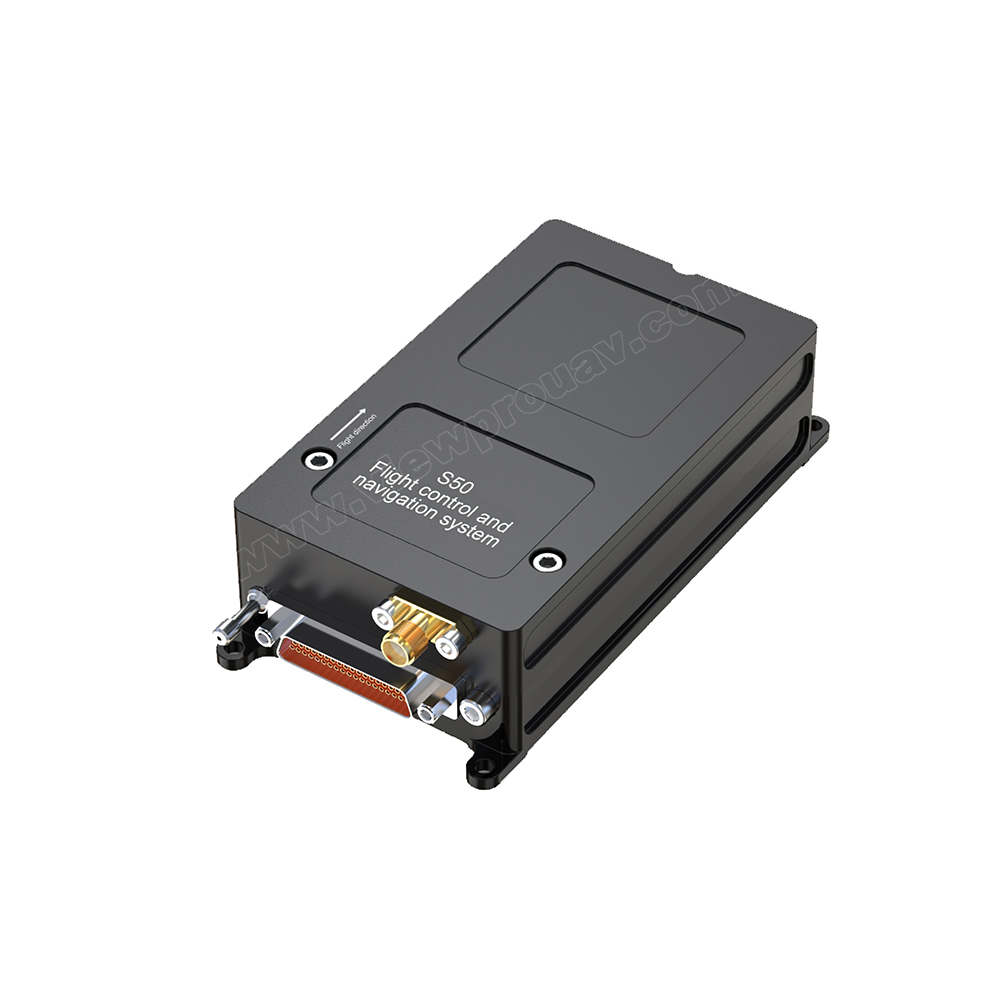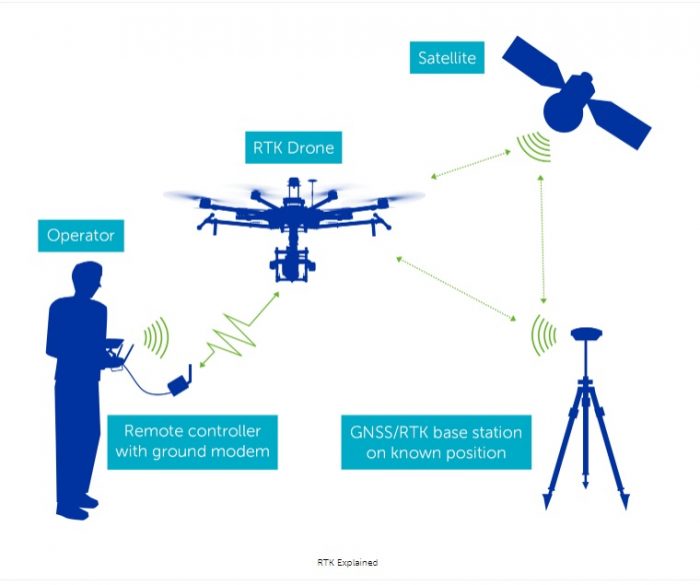SparkNavi Drone Flight Controller and GNSS/INS Made in Taiwan: Advancement for Expert UAVs
SparkNavi Drone Flight Controller and GNSS/INS Made in Taiwan: Advancement for Expert UAVs
Blog Article
The Value of Drone Trip Controllers in Modern Aerial Technology: Secret Components and Their Influence
In the world of modern airborne modern technology, drone trip controllers work as the crucial systems that manage a drone's performance and abilities. These sophisticated systems incorporate crucial parts such as microcontrollers and GPS components, helping with security and precision in trip operations. Their duty is especially noticable in self-governing features, where advanced formulas boost navigation and obstacle avoidance. As markets significantly depend on drones for applications ranging from farming to monitoring, the progressing innovation within trip controllers elevates vital questions concerning their future impact and potential innovations. What innovations exist ahead that could redefine our understanding of drone capabilities?

Summary of Drone Trip Controllers
In the realm of airborne innovation, drone trip controllers offer as the essential mind of unmanned aerial automobiles (UAVs), making it possible for exact maneuverability and stability during flight. These sophisticated systems integrate sensor information, processing formulas, and control inputs, enabling drones to implement complicated trip patterns with precision.
Drone trip controllers make use of different sensing units, such as gyroscopes, accelerometers, and GPS modules, to evaluate the UAV's alignment and placement in real-time. This info is vital for preserving balance and guaranteeing safe procedure in diverse environmental problems. The controllers process this data to make rapid changes to the drone's motors, enabling smooth changes and receptive handling.
Moreover, flight controllers are geared up with sophisticated software program that supports attributes such as waypoint navigating, challenge avoidance, and self-governing trip abilities. This software is essential for both entertainment and business applications, where dependability and precision are vital. As drone technology continues to advancement, the evolution of flight controllers will certainly play a pivotal function in improving UAV functionality, versatility, and security, eventually broadening their applications across various industries.
Key Components Explained
Comprehending the fundamental elements of drone trip controllers is important for grasping how these systems run successfully. At the heart of a trip controller is the microcontroller, which serves as the mind, refining data from different sensing units and performing commands. Essential sensing units include gyroscopes and accelerometers, which determine the drone's positioning and activity, supplying crucial comments for stablizing.
Another trick element is the measure, which assesses altitude by gauging air pressure, while GPS components use positional data, allowing self-governing navigation - SparkNavi drone flight controller and GNSS/INS made in taiwan. The flight controller also interfaces with Electronic Rate Controllers (ESCs), which control the rate of the drone's electric motors based upon the controller's commands
Interaction components, such as radio receivers, help with remote control input, enabling drivers to send commands in real-time. Furthermore, some trip controllers integrate software that can take care of intricate formulas for waypoint navigation, flight preparation, and telemetry data analysis.
Role in Trip Stability
Central to maintaining flight security, drone trip controllers utilize advanced algorithms to process sensing unit information and make real-time adjustments. These controllers are geared up with a variety of sensors, consisting of accelerometers, gyroscopes, and barometers, which continuously keep track of the drone's positioning, rate, and altitude. By analyzing this data, the flight controller can recognize discrepancies from the preferred flight course and respond immediately to preserve security.
As an example, if a drone experiences an unforeseen gust of wind, the trip controller can rapidly adjust the motor speeds to combat the disturbance, guaranteeing a stable flight trajectory. This capacity is important not only for hands-on flight operations yet additionally for implementing complex maneuvers and preserving smooth flight in different ecological problems.
.png)
Furthermore, the innovative formulas used in flight controllers, such as PID (Proportional-Integral-Derivative) control, enable fine-tuning of the drone's reaction to changes in flight problems. By optimizing these control parameters, flight controllers can improve security, improve responsiveness, and minimize pilot work. Inevitably, the role of trip controllers in making certain trip security is essential for the risk-free and reliable procedure of modern drones throughout diverse applications.
Effect On Autonomous Procedures

Autonomous procedures are especially vital in varied applications such as delivery, monitoring, and agriculture services. With boosted flight controllers, drones can autonomously browse established courses, successfully gather information, and adapt to vibrant environments. This ability lowers the demand for constant our website human oversight, consequently enhancing operational efficiency and safety and security.
Moreover, the implementation of device learning strategies within flight controllers enables drones to enhance their performance with time by picking up from previous objectives. This adaptability leads the way for much more advanced autonomous applications, such as swarm innovation, where numerous drones coordinate their activities to achieve a common objective.
Future Trends in Trip Controllers
Innovations in trip controller innovation are positioned to reinvent drone capabilities in the coming years. One substantial pattern is the assimilation of expert system (AI) and device understanding formulas, allowing drones to discover from their environments and make real-time decisions. This development will enhance autonomous navigation, challenge evasion, and mission planning, dramatically enhancing operational efficiency and safety and security.
Additionally, the advancement of innovative sensor technologies, such as LiDAR and multispectral imaging, will give flight controllers with richer information inputs. This will help with a lot more advanced logical capacities, allowing drones to perform intricate tasks, such as precision search, agriculture and rescue, and facilities examinations with unprecedented precision.
One more emerging pattern is the miniaturization of trip controller elements, which will certainly bring about lighter and extra portable drones. This evolution will certainly expand flight durations and haul capacities, making drones extra functional for different applications.
Verdict
To conclude, drone trip controllers offer as necessary components in modern-day aerial modern technology, ensuring security and precision in ability to move through the assimilation of microcontrollers, accelerometers, and GPS components. SparkNavi drone flight controller and GNSS/INS made in taiwan. Their capacity to enable self-governing procedures and adjust to various a fantastic read applications underscores their significance across several sectors. As improvements in expert system and sensor modern technology continue to emerge, the capacity for enhanced capacities and improved operational efficiency in drone systems will likely reshape the future of aerial applications
Central to keeping trip security, drone trip controllers use innovative algorithms to process sensor information and make real-time modifications. By interpreting this data, the trip controller can recognize inconsistencies from the wanted flight path and react quickly to maintain stability.
Additionally, the sophisticated algorithms made use of in trip controllers, such as PID (Proportional-Integral-Derivative) control, permit for fine-tuning of the drone's reaction to adjustments in flight problems. Inevitably, the duty of trip controllers in ensuring flight stability is crucial for the secure and efficient operation of contemporary drones throughout diverse applications.
The improvements in drone trip controllers not just boost trip stability yet also significantly affect autonomous operations. SparkNavi drone flight controller and GNSS/INS made in taiwan.
Report this page